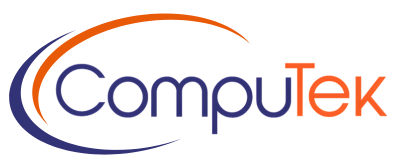
In today’s digital landscape, cybersecurity is of utmost importance. Organizations, especially those in the defense sector, need to prioritize the protection of sensitive data and information. One framework that plays a crucial role in this regard is the Cybersecurity Maturity Model Certification (CMMC). This article aims to answer common questions about CMMC compliance, providing a comprehensive understanding of its significance and implications.
Basics of CMMC
What is CMMC?
CMMC stands for Cybersecurity Maturity Model Certification. We have a comprehensive guide to What Is CMMC Compliance and Why You Should Care? In short: It is a unified standard for assessing and enhancing the cybersecurity posture of organizations that handle defense contracts. CMMC ensures that contractors have the necessary cybersecurity controls in place to protect sensitive information.
How is CMMC different from other cybersecurity frameworks?
CMMC differs from other frameworks like NIST SP 800-171 and ISO 27001 in several ways. Some key differences include:
- Maturity Levels: CMMC introduces five maturity levels, each building upon the previous one, to assess an organization’s cybersecurity practices.
- Third-Party Assessment: CMMC requires organizations to undergo third-party assessments conducted by certified assessors to verify compliance.
- Scope: Unlike other frameworks that may focus on specific areas, CMMC covers the entire supply chain, including subcontractors.
- Specificity: CMMC provides detailed requirements for each maturity level, leaving less room for interpretation.
CMMC Levels and Requirements
What are the different CMMC levels?
CMMC consists of five levels that measure an organization’s cybersecurity maturity:
- Level 1: Basic Cyber Hygiene
- Level 2: Intermediate Cyber Hygiene
- Level 3: Good Cyber Hygiene
- Level 4: Proactive Cybersecurity
- Level 5: Advanced / Progressive Cybersecurity
Each level builds upon the previous one, introducing additional controls and requirements.
How do organizations achieve CMMC certification?
We encourage you to read Who Needs to Comply with CMMC. To achieve CMMC certification, organizations need to follow these steps:
- Self-Assessment: Conduct an internal assessment to identify existing cybersecurity practices and gaps.
- Remediation: Address identified gaps and implement necessary controls and processes.
- Third-Party Assessment: Engage a certified third-party assessment organization (C3PAO) to conduct a formal assessment.
- Certification: Based on the assessment, the organization receives a CMMC certification reflecting its maturity level.
Certifications are valid for up to three years, depending on the level achieved.
Implementing CMMC Compliance
How can organizations prepare for a CMMC assessment?
Preparing for a CMMC assessment involves the following steps:
- Conducting a thorough self-assessment to identify gaps and areas for improvement.
- Addressing identified gaps through the implementation of cybersecurity controls and best practices.
- Documenting policies, procedures, and evidence to demonstrate compliance.
- Providing employee training on cybersecurity awareness and best practices.
- Establishing ongoing monitoring and continuous improvement processes.
What are the challenges in implementing CMMC requirements?
Implementing CMMC requirements can pose challenges, including:
- Understanding and interpreting the specificity of CMMC requirements.
- Allocating resources, including budget and expertise, to meet compliance needs.
- Aligning existing cybersecurity practices with the required controls.
- Keeping up with evolving cybersecurity threats and technologies.
To overcome these challenges, organizations should engage with cybersecurity experts, allocate adequate resources, stay updated with CMMC guidelines, and establish a culture of continuous improvement.
Implications of CMMC Compliance
What are the benefits of CMMC compliance for small businesses?
CMMC compliance offers several benefits for small businesses, including:
- Leveling the playing field by demonstrating their commitment to cybersecurity.
- Gaining a competitive edge when bidding for government contracts.
- Enhancing cybersecurity practices to protect sensitive data and customer information.
Conclusion
In conclusion, understanding CMMC compliance is essential for organizations, particularly those in the defense sector. The framework provides a standardized approach to enhancing cybersecurity practices and protecting sensitive information. By prioritizing cybersecurity, organizations can gain a competitive advantage, secure government contracts, and contribute to a more secure digital environment. Stay informed, adapt to evolving cybersecurity requirements, and consider seeking CMMC certification to strengthen your organization’s cybersecurity posture.
